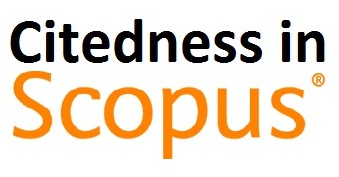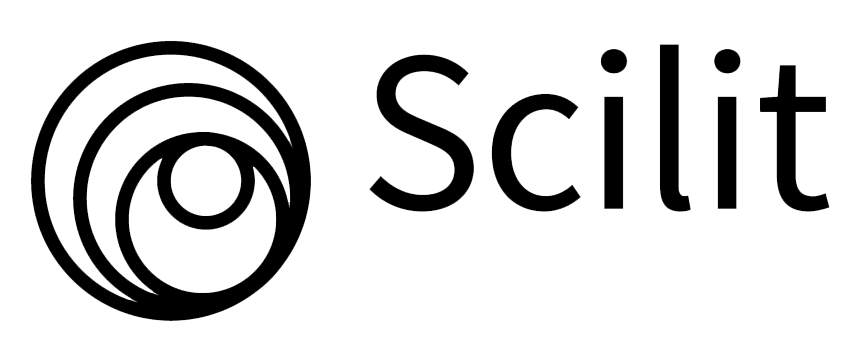Implementation of LightGBM and Random Forest in Potential Customer Classification
DOI:
https://doi.org/10.38043/tiers.v4i1.4355Keywords:
LightGBM, Random Forest, ClasificationAbstract
Classification is one of the data mining techniques that can be used to determine potential custumers. Previous research show that the boosting method, especially LGBM, produces the highest accuracy value of all models, namely 100%. Meanwhile, for the two bagging methods, Random Forest produced the highest accuracy compared to Extra Trees, namely 99.03%. The research uses the LGBM and Random Forest methods to classify potential customers. The results of this study indicate that in imbalance data the LightGBM method has better accuracy than the Random Forest, which is 85.49%, when the Random Forest is unable to produce a model. The SMOTE method used in this study affects the accuracy of the random forest but does not affect the accuracy of LightGBM. Over all the Accuracy, Recall, Specificity, and Precision values, Random Forest produces a good value compared to LightGBM on balanced data. Meanwhile, LightGBM is able to handle unbalanced data.
Downloads
References
P. Cortez and R. Laureano, “Using Data Mining for Bank Direct Marketing : An Application of the CRISP- DM Methodology,” in European Simulation And Modelling Conference, 2011.
E. Miranda and Julisar, “DATA MINING DENGAN METODE KLASIFIKASI NAÏVE BAYES UNTUK MENGKLASIFIKASIKAN PELANGGAN Eka Miranda , Julisar Program Sistem Informasi , Program Studi Sistem Informasi , Universitas Bina Nusantara,” Infotech, vol. 4, no. 9, pp. 6–12, 2018.
M. E. Lasulika, “Komparasi Naïve Bayes, Support Vector Machine Dan K-Nearest Neighbor Untuk Mengetahui Akurasi Tertinggi Pada Prediksi Kelancaran Pembayaran Tv Kabel,” Ilk. J. Ilm., vol. 11, no. 1, pp. 11–16, 2019, doi: 10.33096/ilkom.v11i1.408.11-16.
D. Mutiara, C. Hermanto, A. F. Sugianto, O. Ika, and A. Nugroho, “Pemilihan Pelanggan Potensial Dengan Melakukan Pemetaan Area Dengan Metode Algoritma K-NN dan K-Means Di Yamaha Nusantara Motor Purwokerto,” vol. 4, pp. 52–57, 2021.
R. Siringoringo and I. K. Jaya, “Ensemble Learning Dengan Metode Smote Bagging Pada Klasifikasi Data Tidak Seimbang,” vol. 3, no. 2, pp. 75–81, 2018.
L. M. Cendani and A. Wibowo, “Perbandingan Metode Ensemble Learning pada Klasifikasi Penyakit Diabetes,” vol. 13, no. 1, pp. 33–44, 2022.
I. Wardana and V. Isnaini, “Gradient Boosting Machine , Random Forest dan Light GBM untuk,” no. February, 2022, doi: 10.29207/resti.v5i1.3682.
K. Handayani and Erni, “PENERAPAN LIGHT GRADIENT BOOSTING DALAM PREDIKSI RASIO KLIK,” J. Mhs. Tek. Inform., vol. 7, no. 1, pp. 13–18, 2023.
W. Nugraha, “Prediksi Penyakit Jantung Cardiovascular Menggunakan Model Algoritma Klasifikasi,” J. Manag. dan Inform., vol. 9, no. 2, pp. 3–8, 2021.
A. Miftahusalam, A. F. Nuraini, A. A. Khoirunisa, and H. Pratiwi, “Perbandingan Algoritma Random Forest, Naïve Bayes, dan Support Vector Machine Pada Analisis Sentimen Twitter Mengenai Opini Masyarakat Terhadap Penghapusan Tenaga Honorer,” Semin. Nas. Off. Stat., vol. 2022, no. 1, pp. 563–572, 2022, doi: 10.34123/semnasoffstat.v2022i1.1410.
B. Bawono and R. Wasono, “Perbandingan Metode Random Forest dan Naive Bayes,” J. Sains dan Sist. Inf., vol. 3, no. 7, pp. 343–348, 2019, [Online]. Available: http://prosiding.unimus.ac.id
Ramadani and B. H. Hayadi, “Perbandingan Metode Naive Bayes Dan Random Forest Untuk Menentukan Prestasi Belajar Siswa Pada Jurusan RPL (Studi Kasus SMK Swasta Siti Banun Sigambal),” J. Comput. Sci. Inf. Technol. Progr. Stud. Teknol. Inf., no. 2, p. 2022, 2022, [Online]. Available: http://jurnal.ulb.ac.id/index.php/JCoInT/index
R. Leonardo, J. Pratama, and Chrisnatalis, “Perbandingan Metode Random Forest Dan Naïve Bayes Dalam Prediksi Keberhasilan Klien Telemarketing,” vol. 3, pp. 455–459, 2020.
T. A.M and A. Yaqin, “Perbandingan Algoritma Naïve Bayes, K-Nearest Neighbors dan Random Forest untuk Klasifikasi Sentimen Terhadap BPJS Kesehatan pada Media Twitter,” InComTech J. Telekomun. dan Komput., vol. 12, no. 1, p. 01, 2022, doi: 10.22441/incomtech.v12i1.13642.
D. H. Depari et al., “Perbandingan Model Decision Tree , Naive Bayes dan Random Forest untuk Prediksi Klasifikasi Penyakit Jantung,” vol. 4221, pp. 239–248, 2022.
L. Sari, A. Romadloni, and R. Listiyaningrum, “Penerapan Data Mining dalam Analisis Prediksi Kanker Paru Menggunakan Algoritma Random,” vol. 14, no. 01, pp. 155–162, 2023, doi: 10.35970/infotekmesin.v14i1.1751.
A. Raza, “Superstore Marketing Campaign Dataset,” kaggle, 2023. https://www.kaggle.com/datasets/ahsan81/superstore-marketing-campaign-dataset
W. Romadhona, B. I. Nugroho, and A. A. Murtopo, “Implementasi Data Mining Pemilihan Pelanggan Potensial Menggunakan Algoritma,” vol. 11, no. September, pp. 100–104, 2022.
P. H. Putra, B. Purba, and Y. A. Dalimunthe, “Random forest and decision tree algorithms for car price prediction,” vol. 1, no. 2, pp. 81–89, 2023.
N. Putu, Y. Trisna, E. N. Kencana, and I. W. Sumarjaya, “SMOTE : POTENSI DAN KEKURANGANNYA PADA SURVEI,” vol. 10, no. November, pp. 235–240, 2021.
Y. . Suhanda, L. . Nurlaela, I. . Kurniati, A. Dharmalau, and I. . Rosita, “Predictive Analysis of Customer Retention Using the Random Forest Algorithm”, TIERS, vol. 3, no. 1, pp. 35-47, Jun. 2022.
I. G. K. K. . Putra and I. G. W. S. . Dharma, “Application of The K-Means Clustering Method To Search For Potential Tourists of Bendesa Hotel”, TIERS, vol. 4, no. 1, pp. 8-15, Jun. 2023.
A. W. O. . Gama, J. T. . Junieargo, and D. A. P. A. G. . Putri, “Rancang Bangun Sistem Informasi Akademik Berbasis Mobile Application”, TIERS, vol. 2, no. 1, pp. 31-40, Dec. 2021. [24] F. D. Marleny and M. Mambang, “Predictive Modeling Classification of Post-Flood and Abrasion Effects With Deep Learning Approach”, TIERS, vol. 3, no. 1, pp. 1-10, Jun. 2022.
P. Subarkah, S. A. . Solikhatin, I. . Darmayanti, A. N. . Ikhsan, D. U. . Hidayah, and R. M. . Anjani, “Prediction of Education Level in Population Data Using Naïve Bayes Algorithm”, TIERS, vol. 3, no. 2, pp. 69-75, Dec. 2022.
Downloads
Published
How to Cite
Issue
Section
License
Copyright (c) 2023 Laura Sari, Annisa Romadloni, Rostika Lityaningrum, Hety Dwi Hastuti

This work is licensed under a Creative Commons Attribution-ShareAlike 4.0 International License.





















